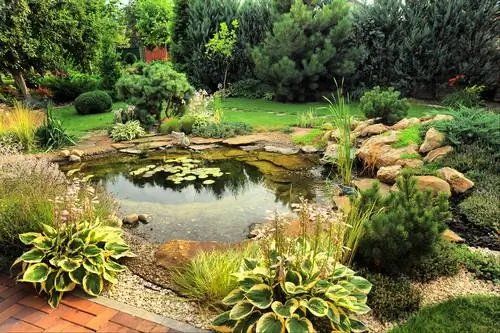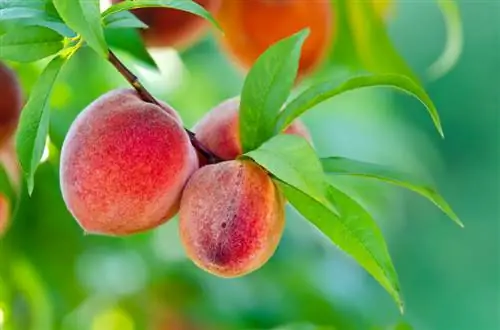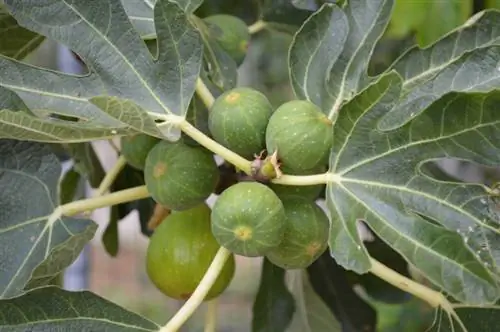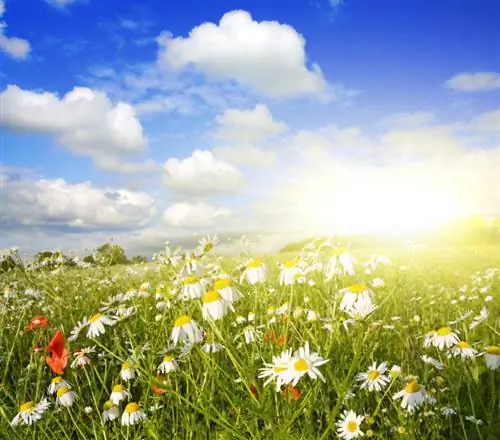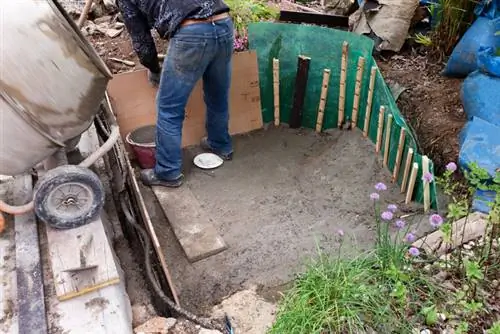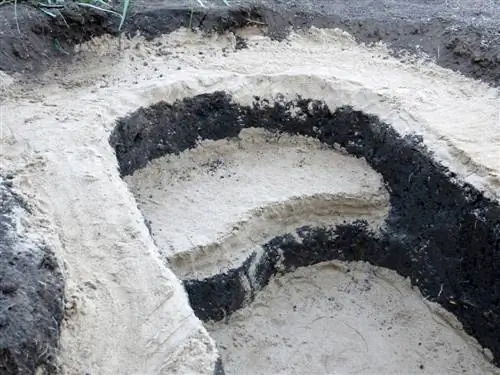- Author admin [email protected].
- Public 2024-01-05 20:48.
- Last modified 2025-01-23 11:21.
If you want to create a garden pond, you should plan well in advance. Because the better the prior knowledge, the greater and longer-term the subsequent enjoyment of your own watering hole. A very important thing for functioning pond biology are the different pond zones.
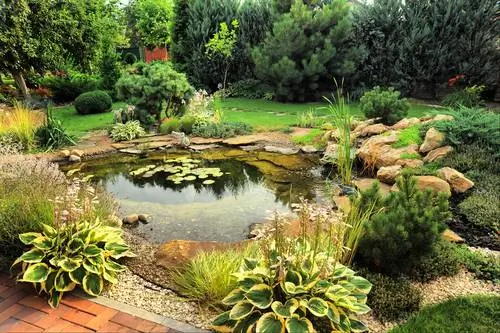
Why are pond zones important?
Pond zones are important for functioning pond biology and consist of four areas: 1. Riparian zone (moist edge zone), 2nd swamp zone (up to 20 cm depth), 3rd shallow water zone (20-60 cm depth) and 4th deep water zone (60-120 cm depth). These zones provide suitable habitats for different plants and animals and promote a he althy water environment.
Why pond zones?
For a classic garden pond, a hollow is not simply dug haphazardly and filled with water. After all, it is a stagnant body of water that is supposed to decorate the garden and also enrich it in terms of biodiversity - so it is important to prevent it from turning into a lifeless and dirty pond in good time.
A pond with different depth zones offers more plants and animals a suitable habitat and ideally automatically creates a balanced, he althy water environment. You can also cultivate appropriate plants in the designated zones, giving you a versatile, attractive overall appearance.
The classic pond zones are as follows:
1. Shore area
2. Swamp Zone
3. Shallow water zone4. Deep water zone
River Zone
The riparian zone is the edge zone of the pond that is not permanently covered with water, but is still moist. It frames the pond and also forms the access zone to the water. Robust grasses such as miscanthus, bamboo or pampas grass are particularly suitable for planting on the bank. On the one hand, they create an attractive visual frame accent and, on the other hand, they also serve as a natural fastening. They also provide shelter for small animals.
Swamp Zone
This refers to the outermost ring of the water body, which is no deeper than 20 cm. When excavating, you should make sure that the swamp zone does not take up more than a third of the total surface of the pond. Swamp plants such as calamus, floating pondweed and frog spoon thrive in the swamp zone. The floating fern is also a decorative representative for this zone.
Shallow water zone
The next inner pond zone is the shallow water zone, the depth of which should be between 20 and 60 cm. The shallow water zone is very important both for the later visual appearance of the pond and for the water biology. Many pond plants can grow here and have a cleansing effect through their absorption of nutrients from the soil and water. They take away the food source from algae and at the same time enrich the soil and water with oxygen, which also prevents rot.
Ideal shallow water plants are water mint or pine fronds.
Deep water zone
The deepest middle zone, which is also relevant for fish, can be around 60 to 120 cm deep. Here you can, for example, plant different types of water lilies.

